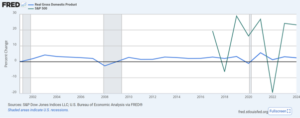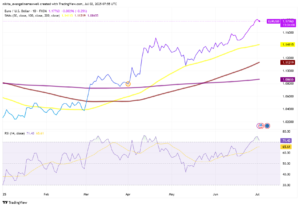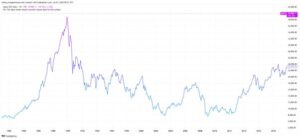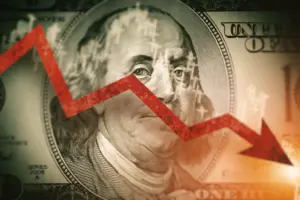The recent drop in gold prices is not solely due to Trump’s election victory, as other underlying factors are also influencing the precious metals market. Meanwhile, global demand for silver, particularly from the solar industry, is providing long-term support for silver.
Reasons Behind Gold’s Price Decline
Following Trump’s election win, gold prices fell to $2,643 per ounce, marking a 19-day low. This decline is not solely a result of Trump’s victory but is more broadly tied to the market's reaction to a Republican win. According to Heraeus precious metals analysts, since 1976, the election of a Republican administration has typically led to an average 4.5% decline in gold prices within 60 days, whereas a Democratic victory has generally seen an average 3.8% rise in gold.
Analysts highlight that a Republican victory often signals a shift toward conservative economic policies, which can reduce geopolitical uncertainty. With a decrease in uncertainty, demand for gold as a safe-haven asset typically declines. However, should Trump enact tariffs and tax cuts, inflation may increase along with the federal deficit, creating potential uncertainty in Federal Reserve policy. In such a scenario, demand for gold as a safe haven might strengthen over the longer term.
Declining Investment Demand for Gold
Heraeus reports a noticeable decrease in global investment demand for gold in 2024. Gold bullion sales by the U.S. Mint have dropped by 663,500 ounces year-over-year, while the Perth Mint in Australia has seen a 261,000-ounce decline in sales compared to the previous year. This declining trend in retail gold demand aligns with a broader global pattern, with gold bar and coin investment down 9% year-over-year in Q3 2024.
While demand for gold in India, South Korea, and Taiwan increased by 41%, 36%, and 28%, respectively, overall retail investment demand remains pressured. If gold prices remain high, investment demand may continue to face challenges in the near future.
Sustained Growth in Silver Demand
While gold prices are fluctuating, silver’s long-term demand outlook is bolstered by the solar industry. As solar technology advances and nations ramp up their solar capacity goals, demand for silver has increased. For instance, the UK’s National Energy System Operator (NESO) has called for 47 gigawatts of solar capacity by 2030, compared to the current 17 gigawatts. Germany and China have seen even more rapid growth, with China adding 102.48 gigawatts of solar capacity in the first half of 2024 alone, surpassing its initial annual target by 140%.
Furthermore, Asia is shifting from P-type to N-type solar cells, which require more silver for production. Although silver is being substituted with cheaper metals in some applications, rapid growth in solar installations and evolving technology will likely keep silver demand strong.
Conclusion
In summary, gold’s recent price decline is not solely driven by Trump’s election victory but also reflects broader market reactions to Republican policies. Meanwhile, the rapid expansion of the solar industry globally is creating a strong foundation for silver demand. For forex and precious metals investors, the distinct demand dynamics and price movements in the gold and silver markets warrant close attention.





